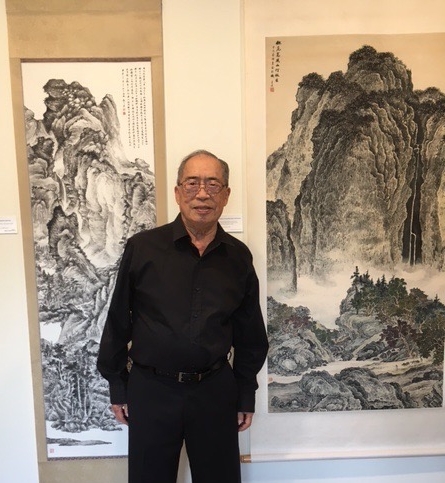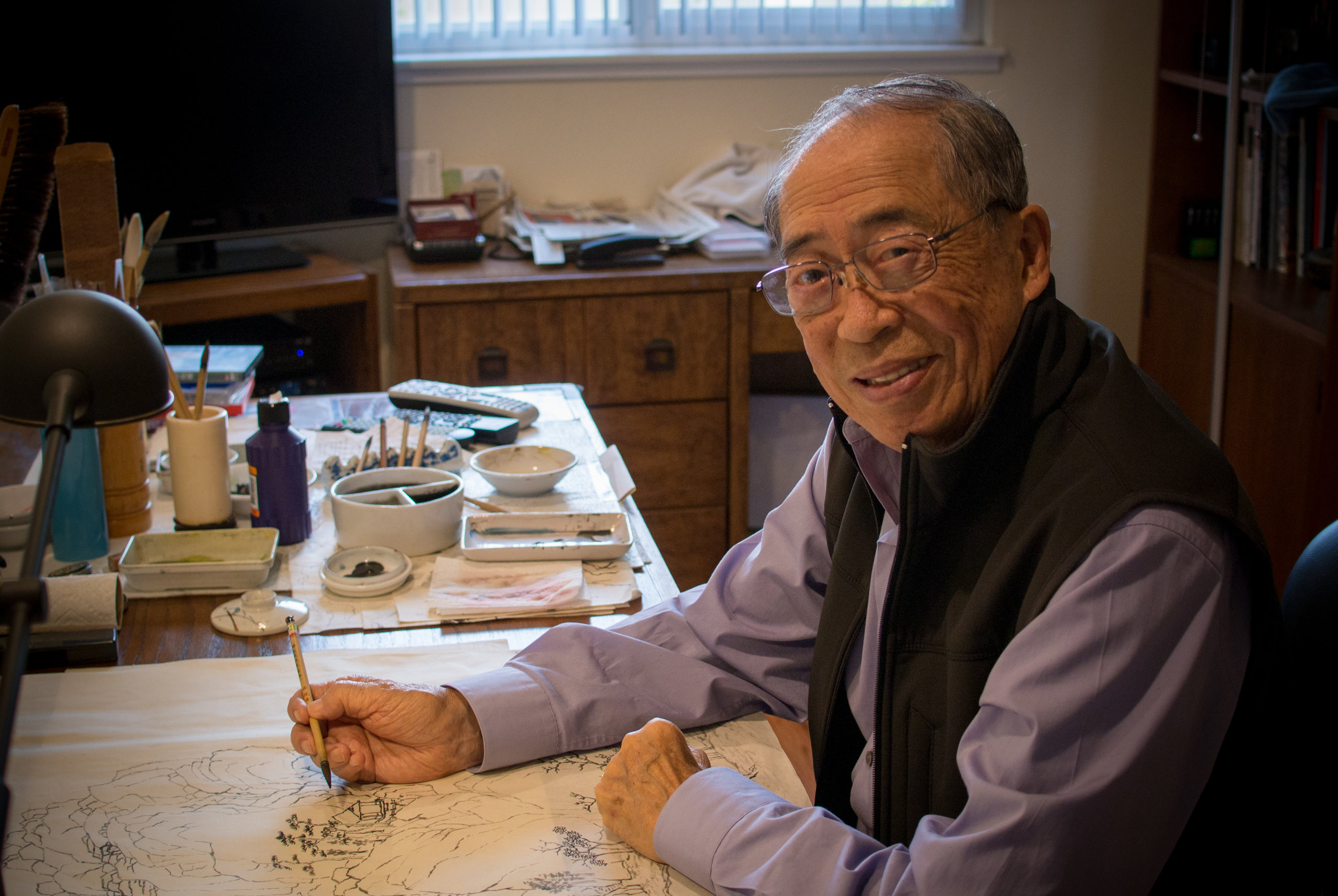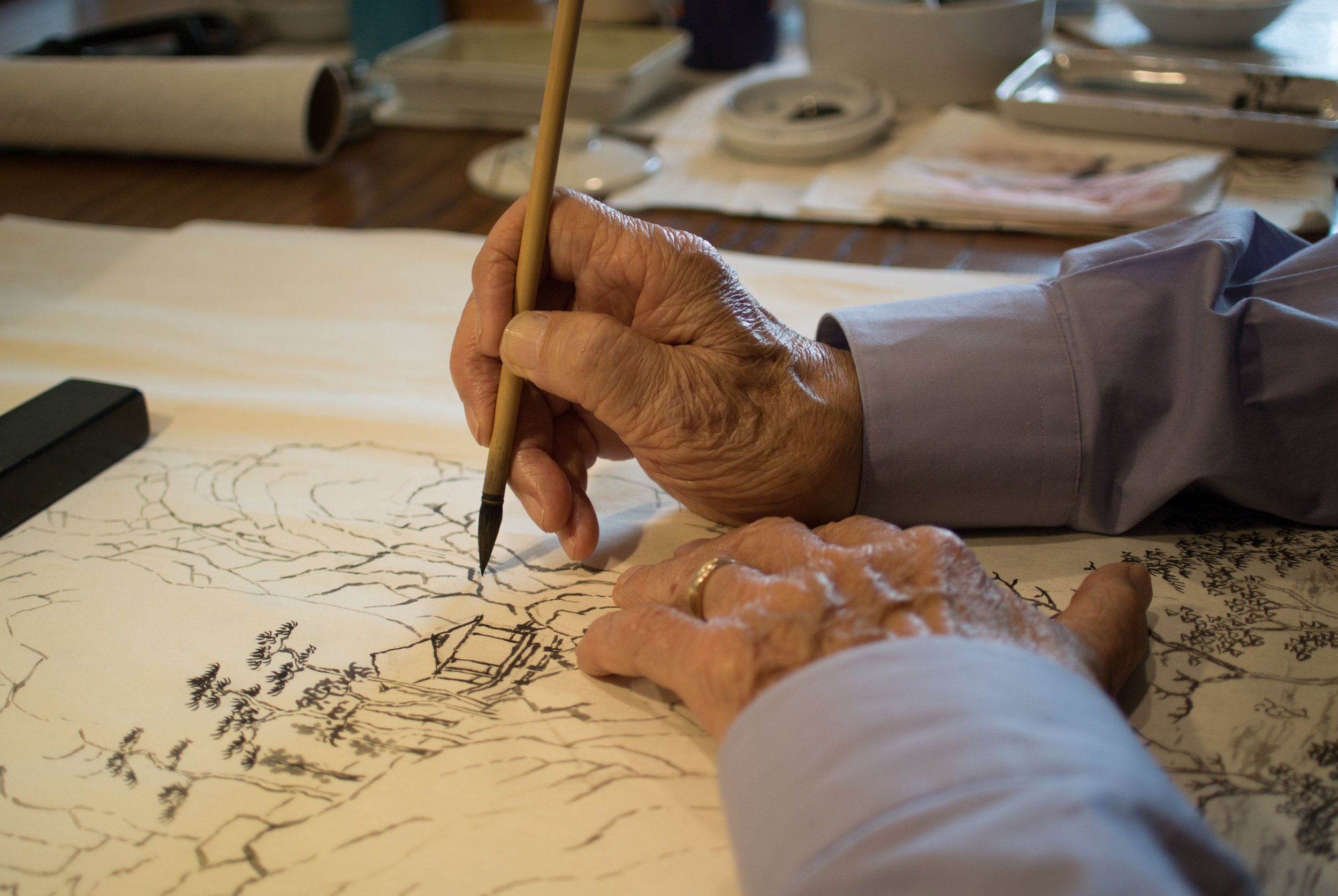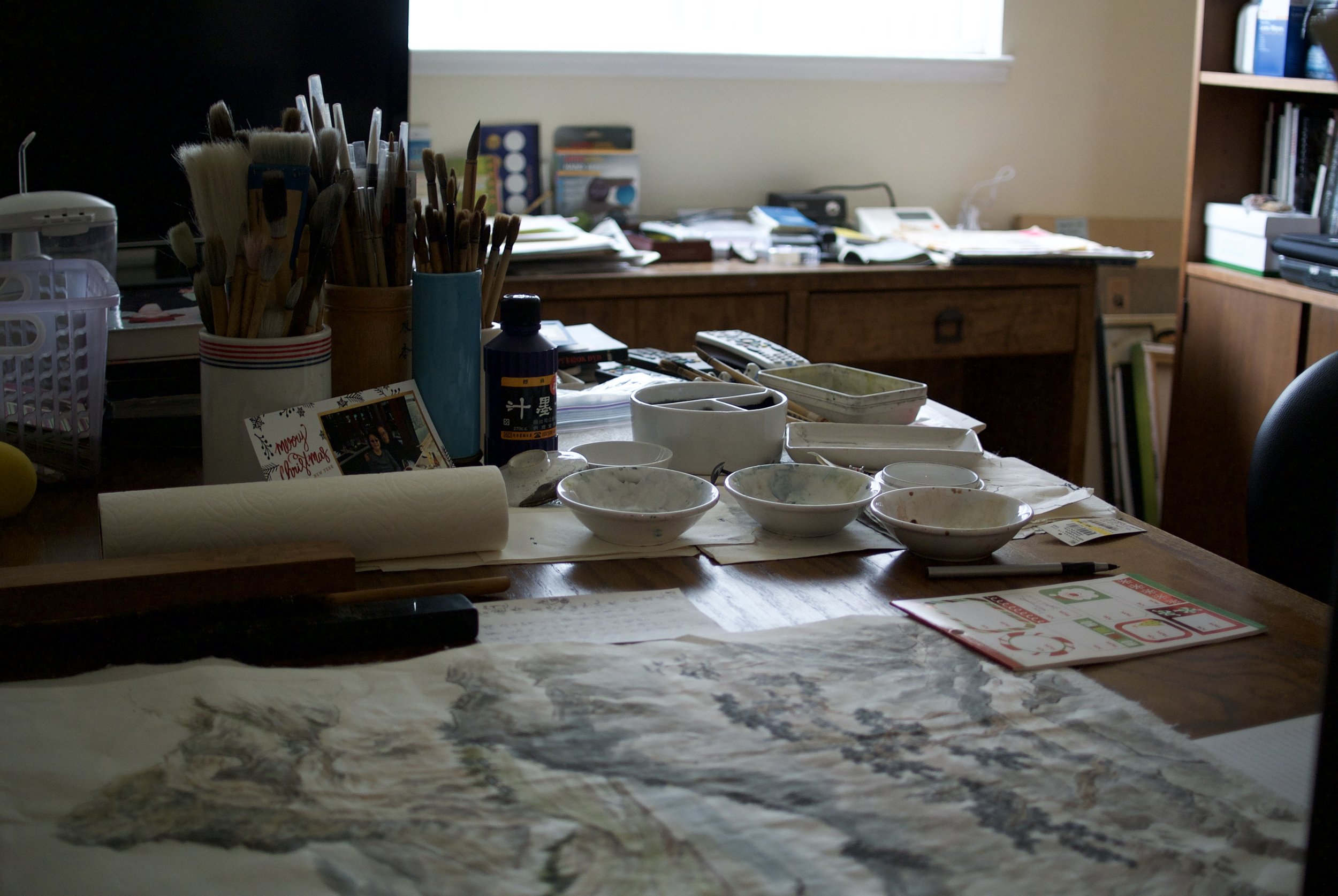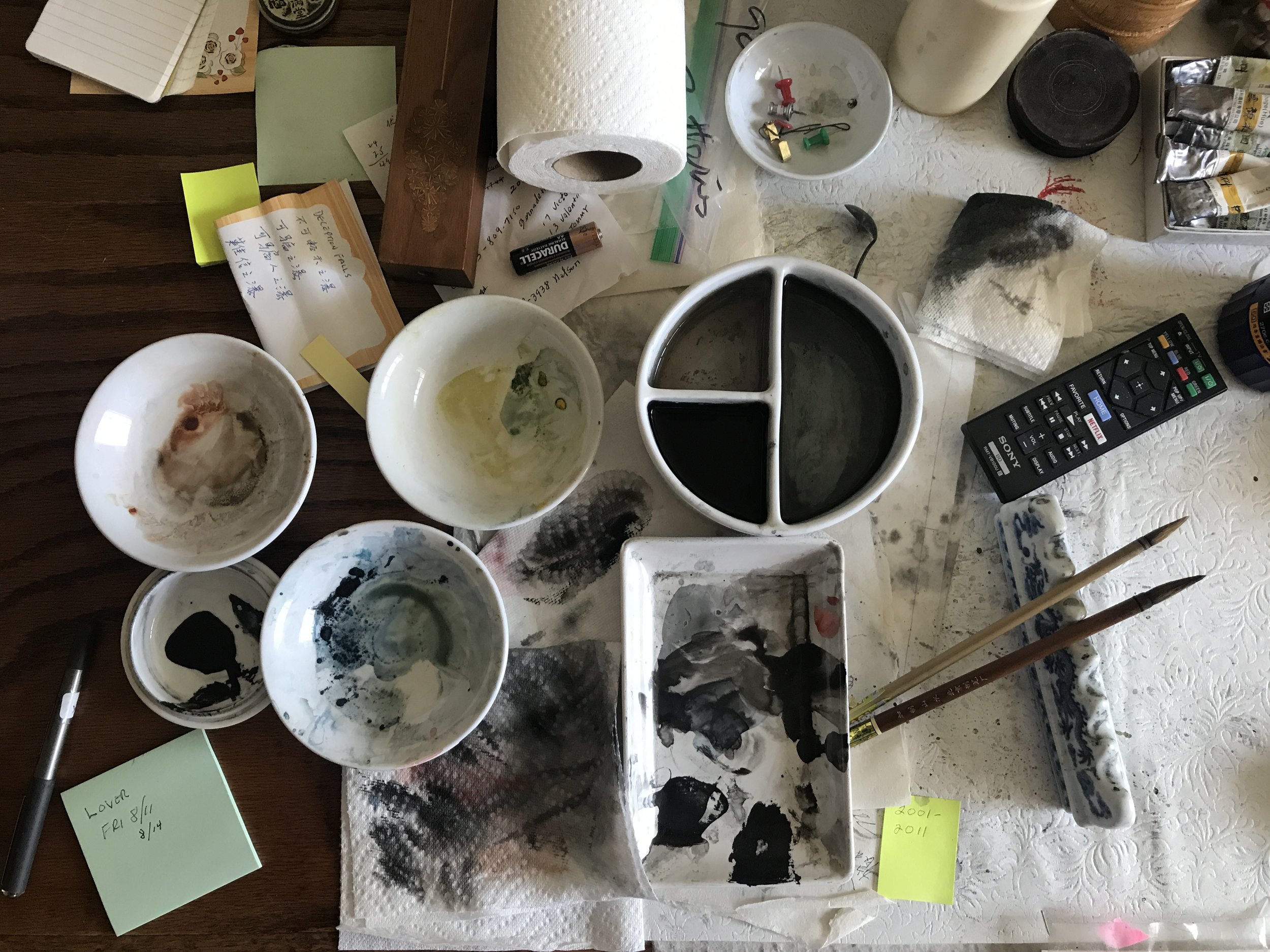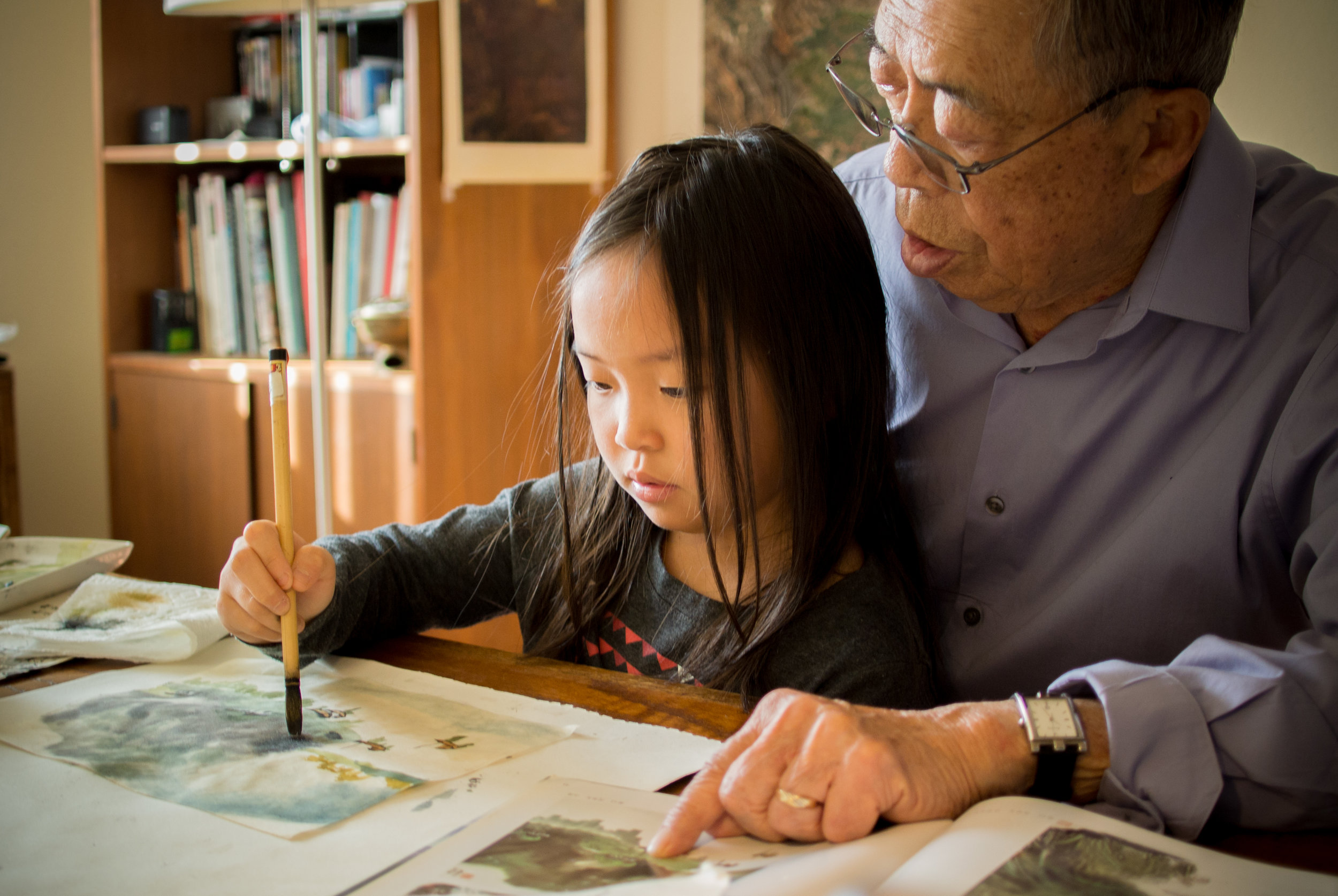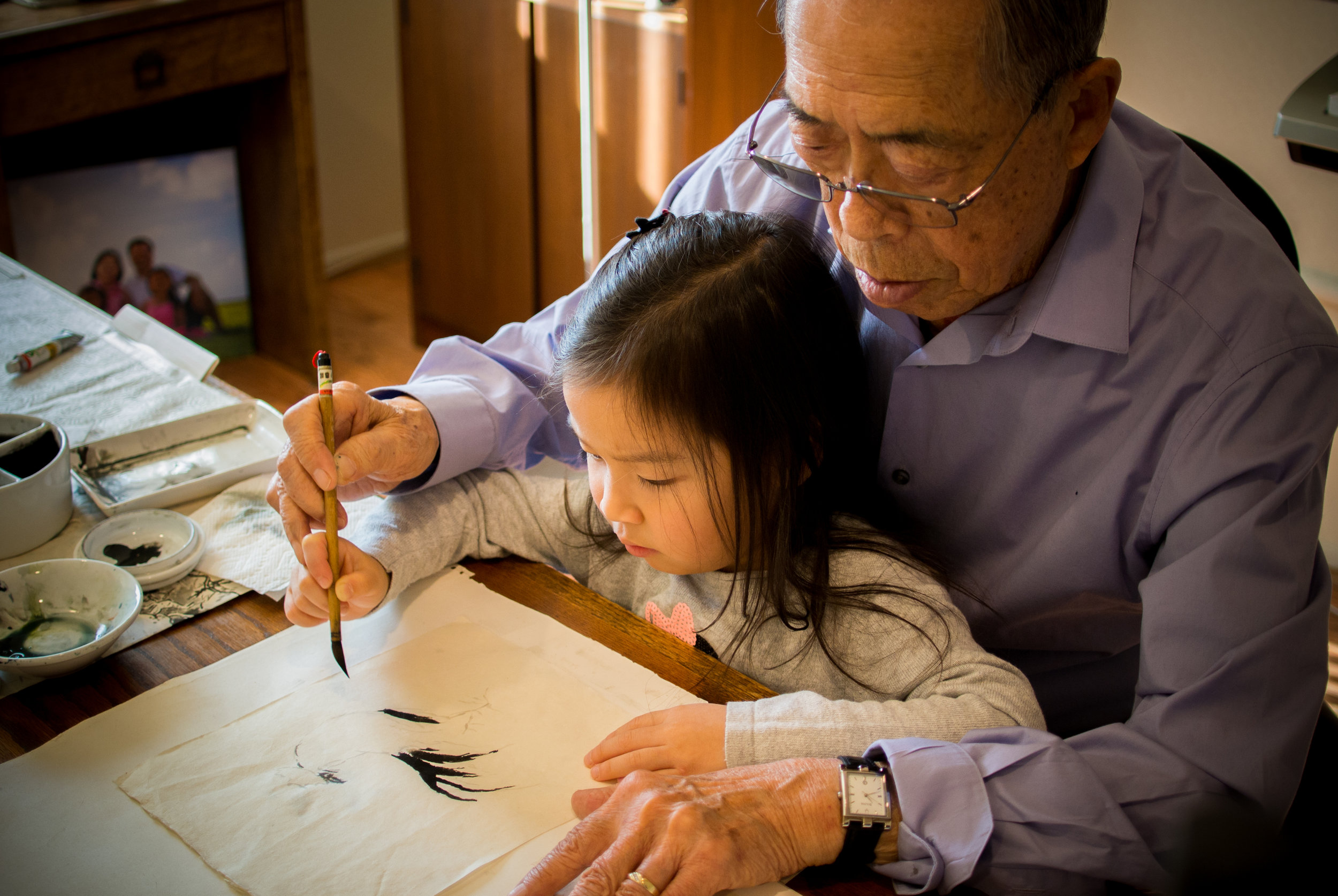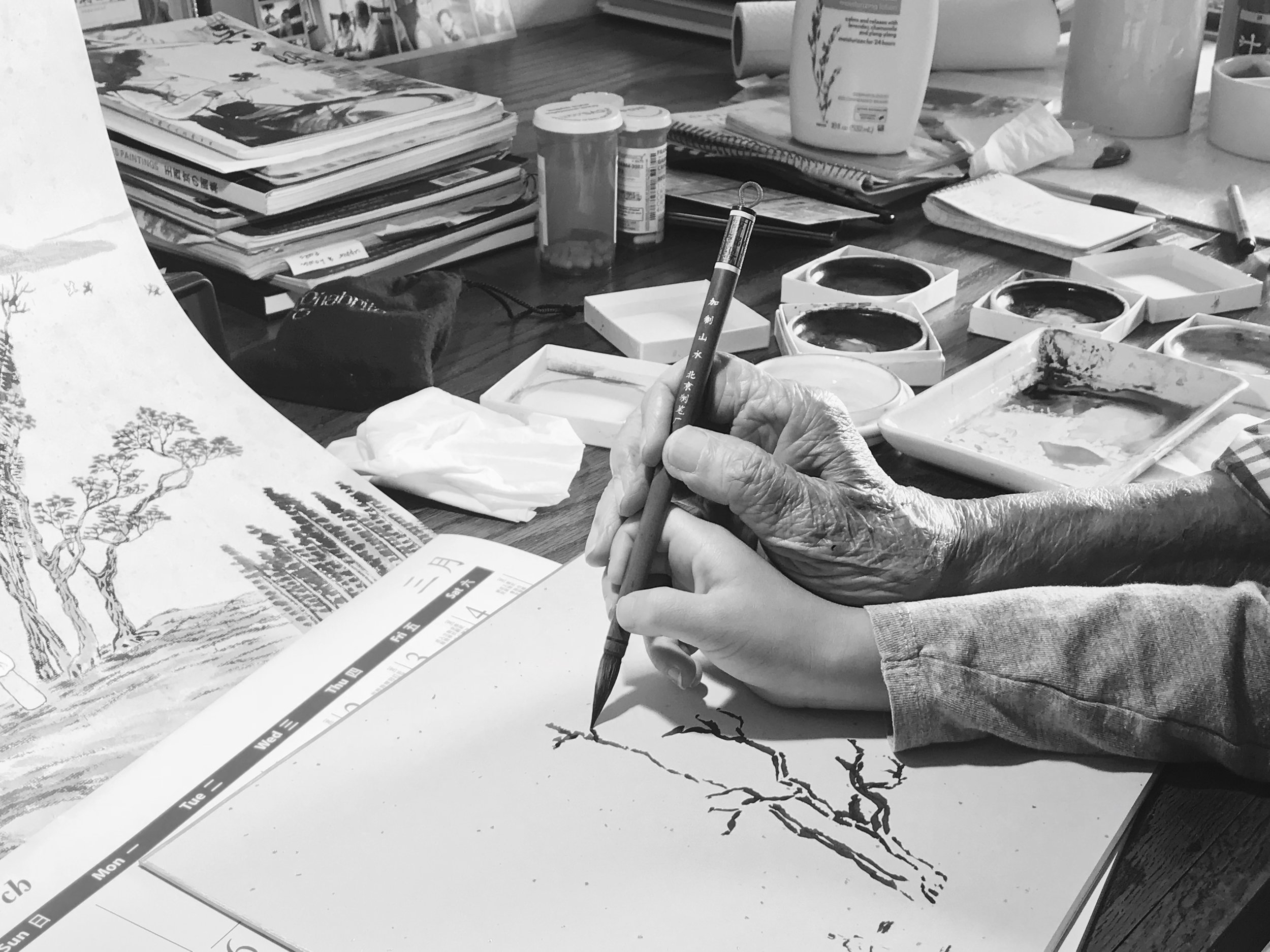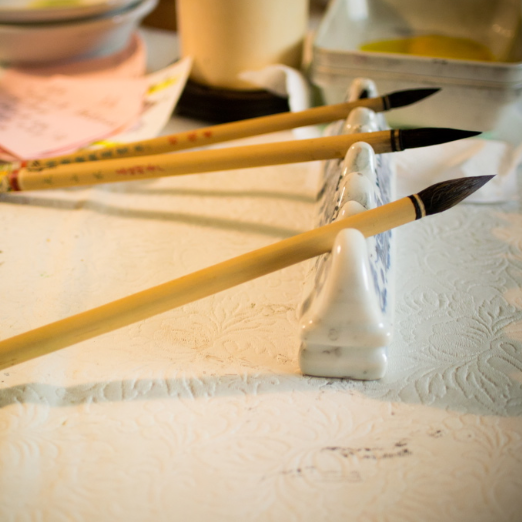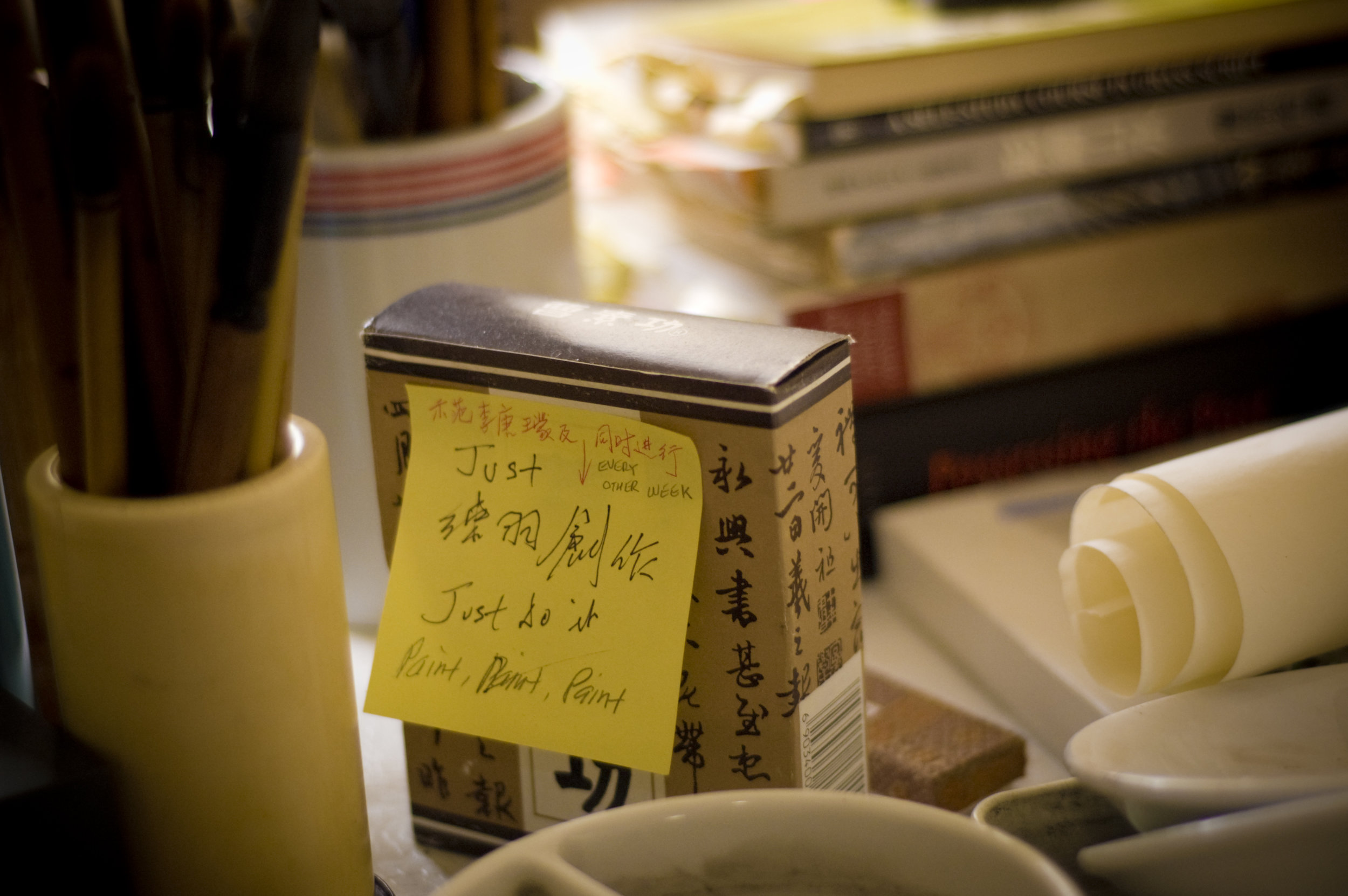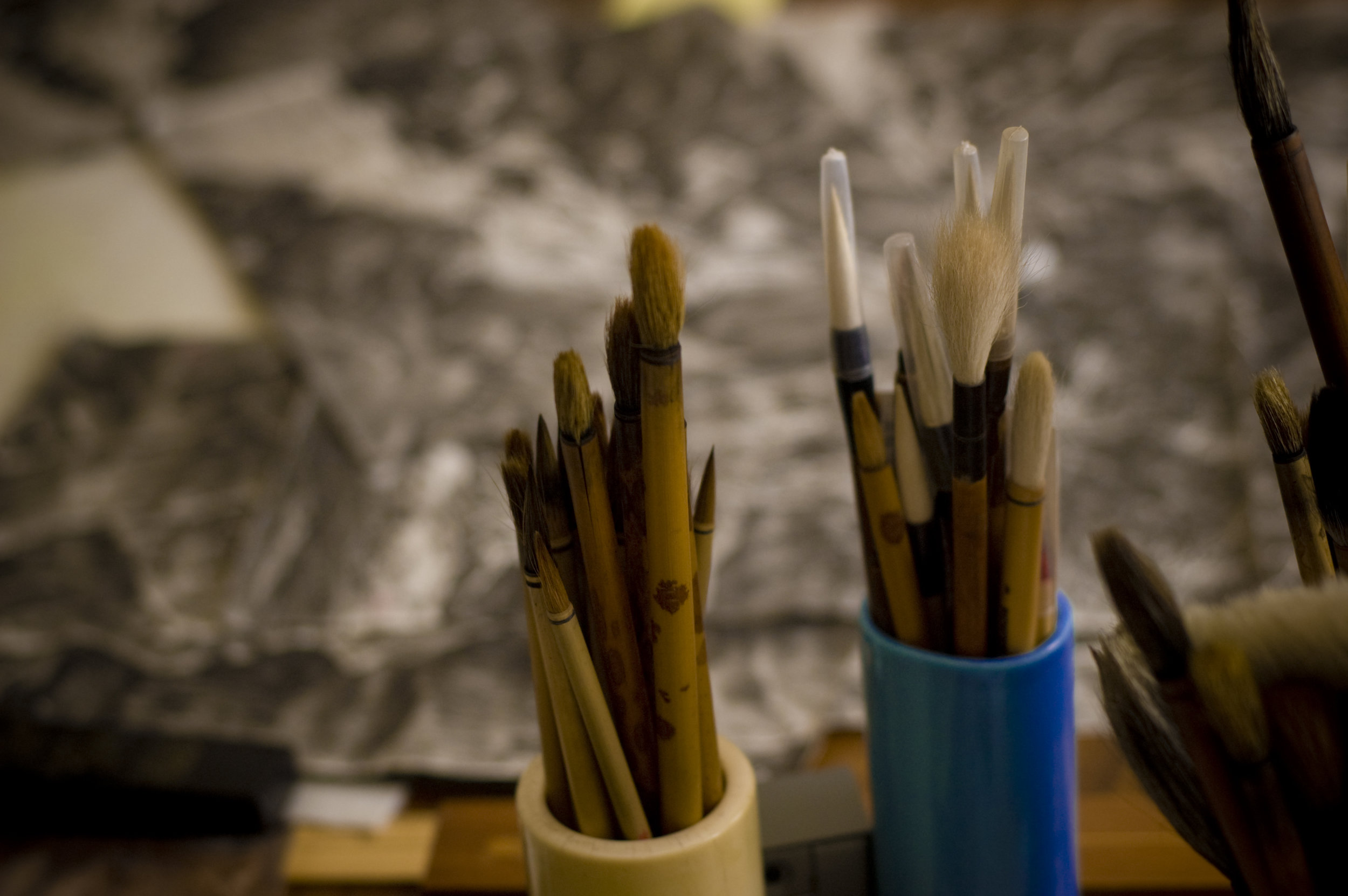Francis L.S. Wei
Francis was born in 1927 in Shanghai. His father was a successful banker and spent his fortune in collecting precious masterpieces of Chinese paintings which had great impact on Francis as a child. At age 6, he began painting according to the manual, Mustard Seed Garden. Seeing great potential in his son, his father provided him private tutors in painting and calligraphy. At 13, Francis copied a major work by Wang Fui who is considered the most diverse and proficient of all Qing landscape artists and that same year, he had his first exhibition with his teachers. He was blessed with great fortune at age of 14; he met and was accepted as pupil to Wu Hu-Fan, considered one of the few top masters in landscape of the 20th century.
Since then, Francis has been immersed in the study of classical landscapes from various periods for the rest of his life. In particular, at age 16 he made copy of Wang Meng's famous work Hermit dwelling in the Ch'ing-bien Mountain which was in the family collection and later donated to Shanghai Museum. Stroke by stroke, dot by dot, it was meticulously copied by Francis. Another copy of the same work was made 55 years later, but it appears to be quite different than the original. This time he emulated the old master to suit his sense of more open composition, while maintaining the same spirit and brush technique, which is known as the Cow's Hair Texture Strokes.
Exhibit 2017
Francis came to the U. S. in 1948. After earning his MBA in Industrial Management from DePaul University, he embarked on a career in Industrial Management and retired in 1992. He began pursuing painting further with passion and finished a copy of Fan K'uan's (990 -1030) monumental work titled Traveling among Mountain and Streams which is now in the collection National Palace Museum, Taipei. It is an excellent rendition by Francis. One can feel the spiritual power and grandeur of nature created by an ancient master over 1000 years ago and now delivered by the brushstrokes of Francis Wei.
His second phase, different but closely related with his study of classics, is his intense study of nature to be combined with his classical training to create original works. They are based on his personal experience imbued with a poetic mood and peacefulness. In 2004 he spent two months traveling all over China to visit, sketch and be inspired by the famous mountains and scenery. He travelled by plane, train, boat, bus, taxi and by foot. Francis carries on the Song tradition in painting of being a realist and idealist, a perfect union of nature and man's aspirations. He does not trust purely derivative works so he always has with him a brush to make immediate small sketches of scenes he sees and feels in his many travels. His works of Mt. Heng Shan, Mt. Wuyi in China and Yosemite along with others are original, inspiring and unique. He also does smaller, lighter and more immediate works, usually initiated by a moment of inspiration, such as bamboo/rock and historical figures, especially the light-hearted painting of the famous Tang poet Li Po, along with Li's poeny which celebrates his fondness of wine drinking with the moon. The poem is written in Francis' exquisite small walking style calligraphy, which adds immeasurable delight to the whole painting.
Francis does not do shortcuts. He represents the most admired quality in Chinese culture, such as diligence, sincerity, scholarship and a deep respect for tradition. He carries on and contributes to a long and rich Chinese artistic tradition.

